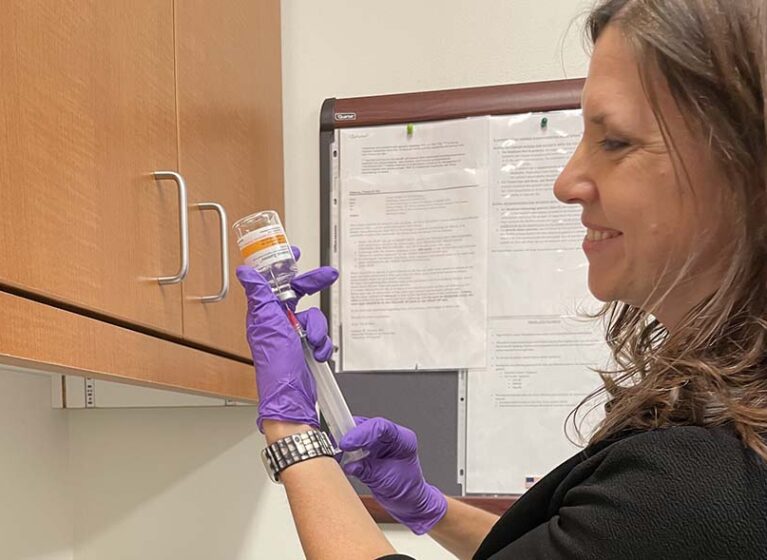
The symptoms of chronic, degenerative conditions like MS deplete patients’ physical and mental energy. At the same time, they require extra physical and mental energy to manage. Patients have to coordinate doctor’s appointments, get their medications, fight with insurance, keep up with diet and exercise to support their well-being — the list goes on and on.
Any time providers make accessing care easier for patients, it can relieve huge burdens and significantly boost quality of life. UVA Health recently did just that by becoming the first program in the United States to administer the MS drug ocrelizumab and hyaluronidase-ocsq, also known as Ocrevus Zenovo, by injection, instead of infusion.
“It’s a medication that has tremendous advantages when you start drilling down to all the details of how we treat MS,” says Robert Shin, MD, director of UVA Health’s MS and Clinical Neuroimmunology Division.
Administering Ocrelizumab in Minutes Instead of Hours
The new injectable is part of the latest generation of disease modifying therapies that came on the scene in 2017 — B cell therapies. The drug ocrelizumab already existed and was given via infusion. By contrast, ocrelizumab and hyaluronidase-ocsq is administered as a subcutaneous injection.
That difference is key. Getting the infusion required patients spend hours in an infusion center. This new version can be administered in a clinic in about 10 minutes. The post-administration observation period is also shorter for the injection — 15 minutes vs. 1 hour for the infusion.
Injectable Form More Convenient, Easier to Access
When we consider the patient’s point of view, the injectable can save them more than a few hours.
“Let’s say you’re traveling to us,” Shin says. “You come to Charlottesville twice a year for infusions. Sometimes you have to make a separate visit for an MRI for surveillance. Then, by the way, you need to see your provider once or twice a year. That could add up to 5 or 6 visits per year.”
This makes a big difference for patients. “For many people, it’s a long drive,” Shin explains. “And doing it — taking days off work, finding childcare, etc. — 5 to 6 times a year isn’t feasible.”
Because it takes so much less time and doesn’t require traveling between multiple locations, it’s much easier to schedule one clinic visit, receive the treatment there, and still have time for MRI the same day, if needed.
“Then you can get everything done in 2 visits a year,” Shin says. “And that might be something anyone can do.”
How UVA Health Became the First to Administer Injectable
Shin was familiar with the medication from his involvement in early phase studies.
“When it was approved by the FDA, we were eager to bring it to our patients,” he shares.
Offering the new medicine at UVA Health took a team effort with collaboration between doctors, nurses, and pharmacists.
“We had to be trained on how to mix the medication and use the device to administer it,” Shin explains. “We had to educate each other on risks and how to manage them safely. And we had to make sure we could get coverage from insurance. There were many moving parts to make this happen.”
The first patient’s experience with the injection provided an example of how helpful the medication can be. “She’s a school bus driver, so spending hours receiving this medicine isn’t practical for her. She received her first treatment and she’s doing great.”